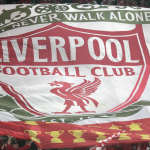NO-ONE ever considered that the key game in the Premier League title race could take place on a Thursday, but here we are.
Liverpool are 90 minutes away from maintaining or establishing a lead that should give them enough breathing space for the remaining 17 games, or in the worst-case scenario, go into a run of games against non big-six teams (a section against whom they have a P14 W14 record this season) with a four point lead over the reigning champions.
December 2018 was one of Liverpool’s all-time stellar months, and has rightly established them as favourites for the title, but what do some of the underlying numbers say about their style and resilience, compared to City’s record-breaking 2017-18 season, and, for posterity’s sake, Liverpool in 2013-14, the last time they came close?
Liverpool win = title race over? #MCILIV pic.twitter.com/w4LVUP7iLQ
— Goal (@goal) January 1, 2019
Attacking
Since Tottenham scored 111 goals in 1962-63 only four teams have reached three figures in an English top-flight and two of them are represented here (Liverpool with 101 in 2013-14 and City with 106 last season), so the fact that the current Liverpool are not quite at those two sides’ level is no cause for concern.
Maintaining their current scoring rate of 2.4 goals per game would give Jurgen Klopp’s team around 91 goals by the end of the season, more than the eventual champions have scored in 21 previous Premier League seasons.
They haven’t, until the last couple of games, even had many penalties to bolster the numbers. 2013-14, in contrast, saw Liverpool take 12 penalties, a total only two teams in Premier League history (Palace in 2004-05 and Leicester in 2015-16) have ever surpassed. There’s a reason Steven Gerrard has the second highest total of penalty goals in the 2010s despite not playing in it since May 2015.
BREAKING: @ManCity midfielder @DeBruyneKev trained today and will be assessed ahead of tomorrow’s game against @LFC. #SSN pic.twitter.com/JIPBpC8tTv
— Sky Sports News (@SkySportsNews) January 2, 2019
Liverpool’s xG rate of 2.1 per game this season is the same as both City in 2017-18 and Liverpool in 2013-14, so the good quality chances are coming at a reliable rate, and the fact that Klopp’s team have scored 44% of their league goals this season in their last six games suggests that their scoring rate may in fact improve as the season progresses.
The successful integration of Xherdan Shaqiri with the established front three means that the emblematic 100 goal target is not out of reach. There’s also the realisation that Mohamed Salah, far from struggling to live up to his first season at Anfield, has actually improved.
After every club had played 20 times the Egyptian led the division in both Expected Goals and Expected Assists, categories “won” by Harry Kane and Kevin De Bruyne in 2017-18. Klopp’s answer to teams potentially spending last summer working out how to counter Salah on Liverpool’s right flank has been to shift him centrally yet not blunt either his creativity or his ability to ghost into scoring positions.
Control/Defending
Klopp’s team have done this despite allowing the opposition slightly higher quality chances than Manchester City did a year ago (0.8 xG against versus 0.6 for Guardiola’s team). It’s here you can see the precise impact of Alisson in his first season; Liverpool’s overall saves rate of 85% is eight percentage points higher than any other side (Tottenham are second on 77%), and 16 points higher than Manchester City (69%) whose propensity for letting in the first shot on target they faced in December is largely responsible for their current points deficit to Liverpool.Scoring goals is important but keeping them out is more so, and it is here that the basis for Liverpool’s title challenge has been laid. A goals against rate of 0.4 per game is on course to be the third best in English top-flight history, behind Chelsea in 2004-05 (0.39) and Liverpool themselves in 1978-79 who conceded just 16 times in 42 games (0.38) and would have recorded 98 points had the three points for a win rule come in a few seasons earlier.
BREAKING: @LFC midfielder James Milner could return to squad to face @ManCity after hamstring injury. #SSN pic.twitter.com/P4qfeDchfT
— Sky Sports News (@SkySportsNews) January 2, 2019
The less said about the defending of Liverpool in 2013-14 the better, with the club’s 1.32 goals conceded per game the most by a team finishing second in the league since Watford in 1983. Their attacking prowess came at a direct cost to their ability to defend and it is being able to do both effectively that has marked out Manchester City last season and Liverpool (so far) this campaign as teams of historic importance.
The Reds’ title challenge in 2014 was an act of faith, built on hope that Steven Gerrard or Luis Suarez could conjure something when needed. City in 2017-18 showed that you could smother a division like Chelsea in 2005-06 but still score freely and win in style, a lesson that seems to have been absorbed at Anfield a year on.





